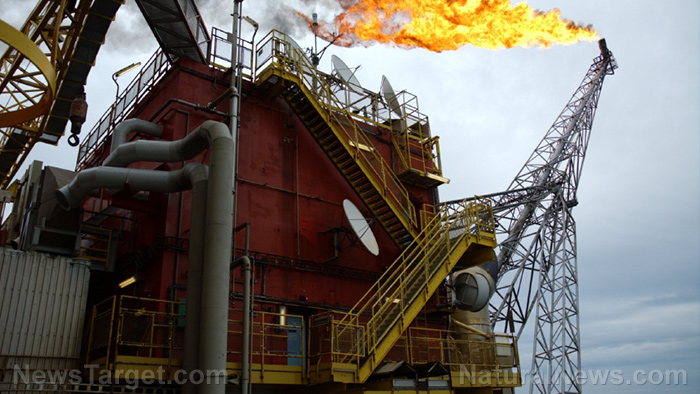Corn collapse: Just 57% of US corn crop is in good or excellent condition
08/17/2022 / By Arsenio Toledo

Less than 60 percent of America’s corn crop is in good or excellent condition, according to the latest Crop Progress report from the United States Department of Agriculture (USDA).
As of Aug. 15, only 12 percent of America’s corn crop is in excellent condition; 45 percent in good condition; 27 percent in fair condition; 10 percent in poor condition; and six percent in very poor condition.
In the USDA’s Crop Progress report published on July 17, 13 percent of the crop was rated excellent, 48 percent good, 25 percent fair, eight percent poor and three percent very poor.
On June 19, still just 13 percent of the crop was rated excellent, but 57 percent of the crop was rated in good condition. Twenty-four percent of the crop was in fair condition. Five percent of the corn crop was rated poor and just one percent of the crop has been in very poor condition.
“We know the corn crop is behind average in maturity after planting delays,” said Brian Grete, editor of Pro Farmer, an agriculture news website owned by the magazine Farm Journal. The paper is just about to go on a crop tour to gather scout reports from over 2,000 corn fields across seven Midwestern states.
“It’s debatable how much crop condition ratings equate to final yield, but this year’s crop was just a tad below average when pollination started,” said Grete. “A key to this is if we find enough bushels [of corn] in the good areas to offset the poorer areas.”
According to the USDA’s National Agricultural Statistics Service, national U.S. corn production is predicted to drop by five percent compared to last year. Average corn yield is forecast at 175.4 bushels per acre, down by 1.6 bushels per acre from last year’s forecast during the same period. The number of acres planted with corn is at 89.8 million, down by four percent from 2021.

Crop conditions all over the country worsening
Delving into the USDA’s data shows that crop conditions are deteriorating all over the country. (Related: Nebraska crop, corn yields drop as extreme heat affects US corn belt.)
In Iowa, just 66 percent of the state’s corn was in good or excellent condition, according to the USDA’s latest report – down from 73 percent of the crop in similar conditions the previous week.
State climatologist Justin Glisan noted that weekly precipitation for the week ending on Aug. 13 “ranged from no accumulation at multiple western and southern Iowa stations to 3.67 inches [of rainfall] in Anamosa” in Jones County, eastern Iowa.
In Kansas, Kellan Heavican of Brownfield Ag News noted that with little rain, crop conditions in the state are also continuing to decline.
“The USDA says 29 percent of corn is rated good-to-excellent with 25 percent dented,” wrote Heavican. “Many crops in Kansas are past the point of recovering from extreme heat and drought.”
Kansas and Texas have the worst-rated corn crop conditions in the USDA’s latest report. In the former, 24 percent of the corn crop was rated poor and 20 percent was rated very poor. In Texas, 26 percent of the corn was rated poor and another 20 percent was rated very poor. Furthermore, just 19 percent of the corn crop in Texas was in good or excellent condition.
The states with the worst corn crop conditions are experiencing extreme heat. As of Aug. 9, the U.S. Drought Monitor reported that around 66 percent of the country was experiencing abnormal dryness or drought. In the northern and eastern areas of the Corn Belt, drought conditions improved slightly since the Drought Monitor’s latest report, while they worsened in western and southern states.
Learn more about the state of America’s crops in Crops.news.
Watch this episode of the “Health Ranger Report” as Mike Adams, the Health Ranger, discusses how worldwide crop failures are now at crisis levels.
This video is from the Health Ranger Report channel on Brighteon.com.
More related articles:
National Black Farmers Association warns: Food shortage inevitable unless the government steps in.
US crops, cattle herds at risk due to “intense heat and dry conditions.”
Pennsylvania farmers are unable to harvest their crops because of the diesel shortage.
Corn, soybean, wheat, oat planting in the US now far behind their five-year averages.
Sources include:
Submit a correction >>
Tagged Under:
agriculture, Climate, corn, crops, Drought, environment, famine, food collapse, food production, food scarcity, food supply, harvest, heat, heatwave, hunger, starvation, supply chain, weather
This article may contain statements that reflect the opinion of the author
RECENT NEWS & ARTICLES
COPYRIGHT © 2017 COLLAPSE.NEWS
All content posted on this site is protected under Free Speech. Collapse.news is not responsible for content written by contributing authors. The information on this site is provided for educational and entertainment purposes only. It is not intended as a substitute for professional advice of any kind. Collapse.news assumes no responsibility for the use or misuse of this material. All trademarks, registered trademarks and service marks mentioned on this site are the property of their respective owners.





















